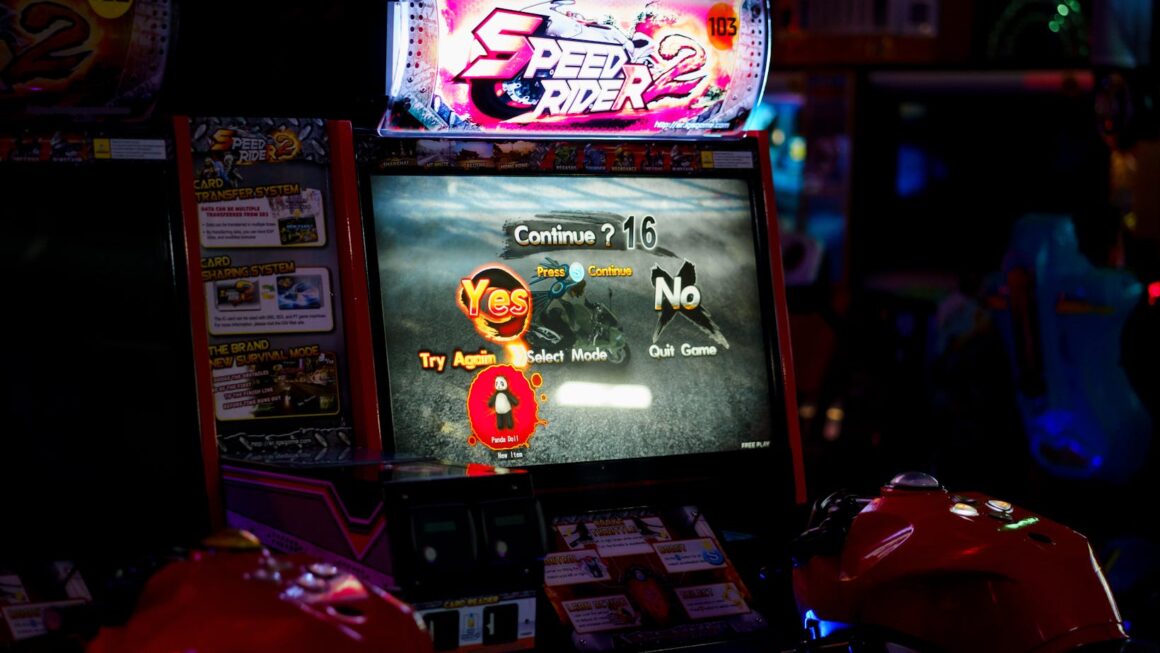Remember the thrill of stepping into an arcade, the cacophony of digital sounds, the flickering neon lights, and the sheer joy of setting a new high score? That nostalgia can now be a part of your living room. Welcome to the world of multi-game arcade machines, where the golden age of gaming lives on.
These machines aren’t just a blast from the past, they’re a gateway to hundreds of classic games. From Pac-Man’s mazes to the space battles of Galaga, they offer an endless library of fun at your fingertips. But what makes these machines tick? How do they deliver so much entertainment in one package? Let’s delve into the world of multi-game arcade machines and unlock the magic within.

Arcade Machine with Multiple Games
Explore arcade machines featuring multiple games to fully grasp this most coveted gaming innovation. At its core, it’s a system ingeniously designed to replicate classic games, rejuvenating nostalgic entertainment right in your living room.
Hardware Components
Get acquainted with the machinery: it’s the heart and soul of a multi-game arcade machine. Three main components—CPU, RAM, and ROM—work in harmony to create a seamless gaming experience.
- Central Processing Unit (CPU) – It acts as the brain of the machine, executing instructions from each game. It’s like a command centre, dictating every blink, beep or movement in the game.
- Random Access Memory (RAM) – It serves as the temporary storage, holding game data only for the duration of play. It’s responsible for storing graphics, keeping track of scores, and maintaining other essential gameplay elements.
- Read-Only Memory – ROM chips store the original game software. Unique for each game, these elements carry the primary instruction set that defines the game’s identity.
Harnessing Emulation to Run Multiple Games
Understand the emulation process: it’s the ace that multi-game arcade machines have up their sleeves, enabling them to host an array of classic arcade games. Using emulator software, the system replicates the functionality of the original hardware, allowing you to play diverse games on a single platform.
- Game ROMs: On launching a game, the emulator reads the associated ROM file, containing data like the original 1980s Contra’s levels, sounds, and graphics.
- Execution: The emulator then interprets these data files, executing the code and mirroring the game as if played on the original arcade machine.
- Switching Games: Post gameplay, the system wipes the RAM clean, ready to load a new game ROM for the next adventure.
Importance of User Interface in Multi-Game Arcade Machines
Notice how the user interface supports the gameplay. From the selection of games to handling the game switching process, user-friendly interfaces guarantee a smooth ride. It’s like your personal game guide, facilitating a seamless transition from one classic game to another, and a straightforward choice from the collection of games.

Essential Considerations When Buying an Arcade Machine
In the world of multi-game arcade machines, several key factors determine a machine’s quality. Understanding these considerations becomes critical when making a purchase decision.
First, consider the machine’s game library. Top-performing machines such as the Prime Arcades Cocktail Arcade Machine, Arcade1Up Street Fighter Classic 3-in-1 Home Arcade, and the Abvideo Exclusive Huge 22 inch Screen Mario Kart Theme 2-Player Retro Cocktail Arcade Machine come pre-loaded with an extensive library of games. They’ve a large variety of options, something you’d want in your arcade machine.
Second, the performance capabilities of the machine are crucial. Prime Arcades Cocktail Arcade Machine, for instance, boasts a robust CPU and ample RAM. It allows swift game switching, assuring seamless transitions between games. Don’t compromise on performance specs — a machine with impressive hardware components can genuinely enhance your gaming experience.
Third, pay attention to the emulator software. Remember how we talked about software being a replica of the original hardware for smooth gameplay? Well, watch for the compatibility between the emulator software and the game titles on the machine. Poorly matched combinations can lead to lags, glitches, and overall dissatisfaction.
Fourth, consider the usability of the machine. It’s not just about the tech stuff — even the hardware format matters. The layout of the buttons and the joystick, the brightness of the screen, the volume of the speakers — all contribute to the gaming experience in a significant way. A user-friendly interface provides easy game selection and smooth transitions.

Lastly, the cost is always worth considering. While high-end machines with advanced features and premium hardware may be appealing, they come with a hefty price tag. Balance your budget with your requirements. Look for a machine that offers great value for money — a good blend of quality and affordability.
Remember, the best arcade machine isn’t necessarily the one with the highest specs or the fanciest design. The best machine is the one that offers a seamless, enjoyable arcade experience. A machine that suits your gaming needs and fits your budget. That’s the one you’re looking for.